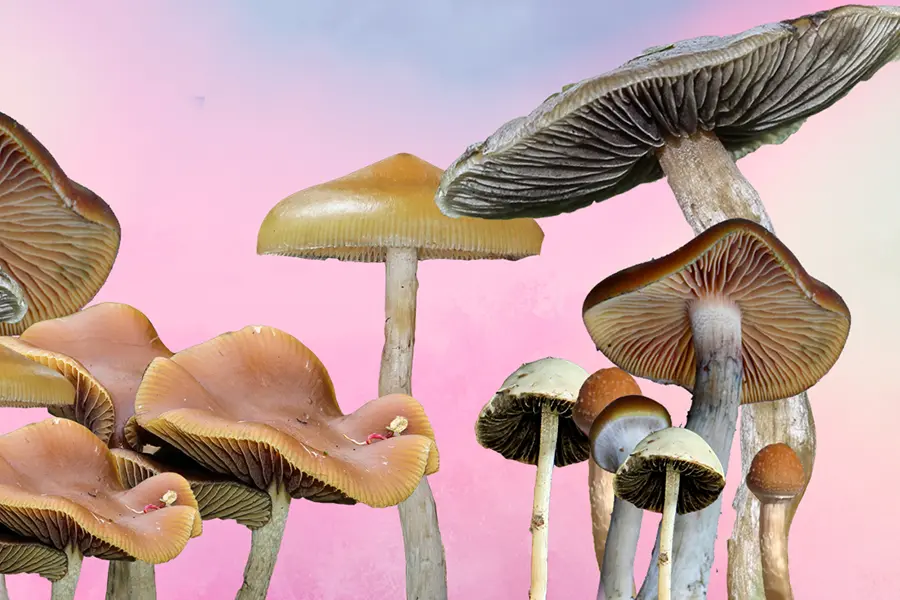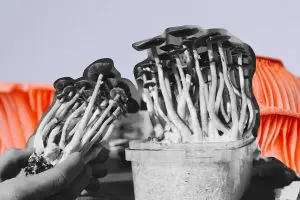Magic mushrooms are so incredible and mysterious, from the beautiful experiences they occasion to the mystical compounds that they naturally produce. But what’s even more mindblowing is that there are over 180 different species of mushrooms that grow wild around the globe—and which all contain psilocybin. Not to mention, some species have dozens of different strains with their own signature shape, flavor, and trip (we’re looking at you, Psilocybe cubensis!). So let’s explore 10 of the most common and widespread magic mushrooms (which also happen to be our favorites), but remember, we’re just scratching the surface!
Psilocybe cubensis
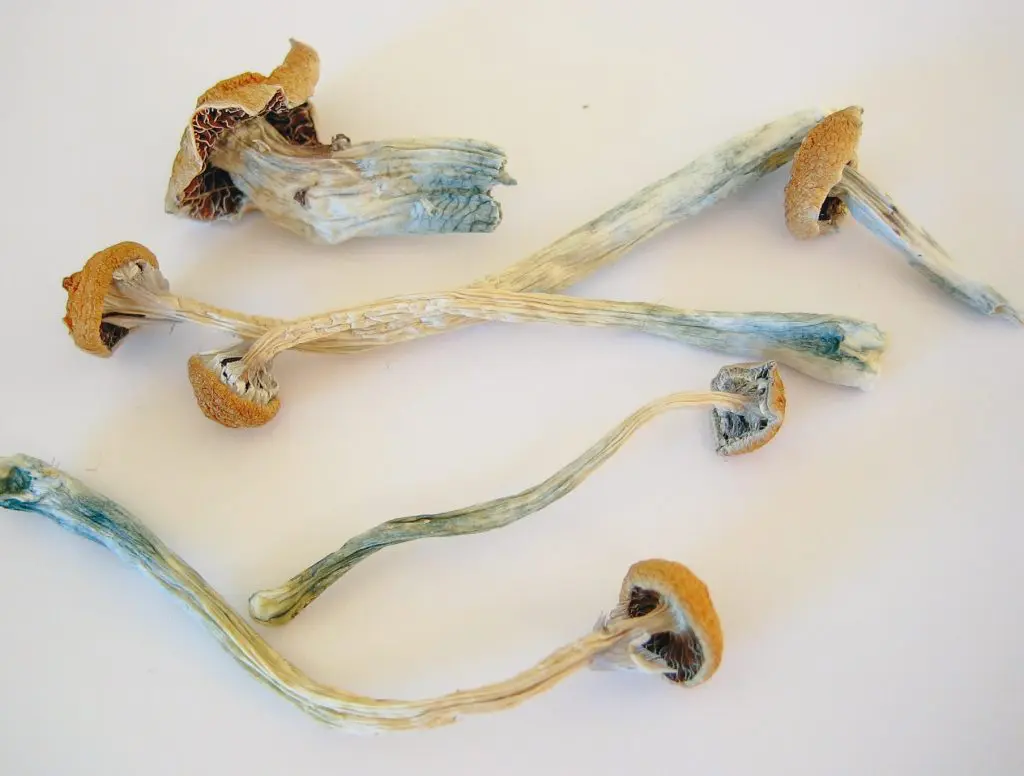
If you’ve eaten psilocybin mushrooms, but had no idea what species it was, chances are it was a strain of Psilocybe cubensis. That’s because “cubes” are the easiest magic mushroom to cultivate indoors, and since the ’70s, there have been a few pivotal books teaching hobby growers how to do so, including Terence and Dennis McKenna’s, Psilocybin: The Magic Mushroom Grower’s Guide. In fact, due to decades of selective home breeding, there are now 60 different strains of P. cubensis, like Golden Teachers, B+, Penis Envy Mushrooms, and Pink Buffalo. In clinical trials looking at the potential of psilocybin to treat mental health conditions, subjects actually receive isolated, synthetic psilocybin, rather than the whole mushroom, so we don’t actually have any rigorous data on the differences between all the magic mushrooms for healing purposes.
While different strains of cubensis can also be found in the wild all over the world, the indoor-grown types are typically more potent. That’s one of the reasons that mushrooms you buy on the underground market are often stronger than the ones you pick in nature, since they’ve been bred for strength and are grown in specific substrates (the material in which you grow mushrooms) that increase potency.
However, you can find cubensis growing throughout the southern US, into Mexico, Central American, and South America. They also grow in Cuba, India, Southeast Asia, and Australia. In nature, they prefer to live on dung and can also be found on well-manured land in the spring, summer, and fall.
In mycologist Paul Stamets’ mushroom identification guide, Psilocybin Mushrooms of the World, he calls P. cubensis “the most majestic of the Psilocybes” because of their easy-to-recognize size and golden color. Like all Psilocybes, P. cubensis’ color depends on its level of hydration; they also turn a bluish color when handled due to psilocin oxidizing (basically being exposed to oxygen). Cubensis is distinct from other Psilocybe species because of its relatively large size and the way the mushroom’s cap widens with maturity. Overall, this is the most famous and widely consumed magic mushroom in existence, but it’s not the only one.
Popular Strains of Psilocybe cubensis
Mushroom identification and taxonomy have never been easy tasks; there are over 200 different species of Psilocybe and the distinctions become more complicated when you take strains and cultivars into account. As mentioned above, there are dozens of different strains of Psilocybe cubensis. Yet, while these strains belong to the same species, they can feature different physical characteristics, growing conditions, and potency. Many of them were created by underground breeders within the past five decades. Other strains have adapted to growing in a particular region over time and may display specific traits that helped them survive in their distinct habitats.
How to Grow Shrooms Bundle
Take Both of Our Courses and Save $90!
Pink Buffalo
Every strain of Psilocybe cubensis has a story, and Pink Buffalo is no exception. Sometimes known as “Thai Pink Buffalo”, this strain was named by ethnomycologist John Allen on the lush Thai island of Koh Samui because it was first spotted next to a Pink Buffalo. It’s on par with other strains of cubensis from Southeast Asia in terms of size and potency. When it comes to its appearance, Pink Buffalo boasts large broad caps that can have reddish coloration near the center. It remains a popular strain for home cultivators because it colonizes quickly and fruits abundantly if conditions are right.
Stargazer
Little is known about the origin of the Stargazer mushroom strain—although there are certainly plenty of rumors. Sometimes called “Inca Stargazer”, many websites claim that this strain was named for its discovery near Inca ruins in the Andes Mountains of Peru—but is it true? Discerning fact from fiction in regard to this strain is no easy task, and unfortunately, we still don’t have a suitable answer. Stargazer is marketed as a popular strain for home growers because it’s known to be a prolific fruiter that’s suitable for beginners. Yet, for actual details on the growing pattern or characteristics of this Stargazer, it’s best to contact your chosen breeder directly: they’re the ones who will be most familiar with their particular version of this ambiguous mushroom.
Albino Goldies
Albino Goldies is a strain that was created by crossing the popular strains Golden Teachers and Albino A+. The result is a beautiful mushroom that showcases the best of its parents in both its appearance and the experience it provides. Compared to other cubensis, it’s a large mushroom with a long stem and a picturesque golden cap. It’s said to be a good mushroom for beginner home cultivators and fruits generously. Albino Goldies are also strong shrooms that combine the smooth, introspective Golden Teacher journey with the very potent intensity of Albino A+, making for a quick come-up and deep experience in both the body and mind.
B+
B+ is famous for being recommended to first-time growers because it’s a resilient strain that can survive a wide margin of growing conditions and some rookie errors while still producing decent fruiting bodies. It’s also recommended to first-time journeyers because of its relatively smooth experience, akin to Golden Teachers. The appearance of B+ (and other cubensis strains) can vary slightly, but they generally have large golden brown caps and white stems that bruise blue on handling.
Burma, Cambodian, Costa Rica Mushroom Strain (and others named after places)
Lastly, there are dozens of strains of Psilocybe cubensis that are named after locations, with some of the most popular being Burma (or Burmese), Cambodian, Costa Rican, Ecuador, Australian, Guadalajara, Chilean, Colombian, Palenque, Cuban–the list could go on. They are all separate strains of cubensis that were named for the place in which they were collected. Therefore, many of these strains can vary slightly in appearance and potency, but they are all genetically very similar and will bruise blue when handled due to oxidation.
Psilocybe semilanceata (Liberty Caps) – One of the most Widespread Naturally Growing Types of Psychedelic Mushrooms
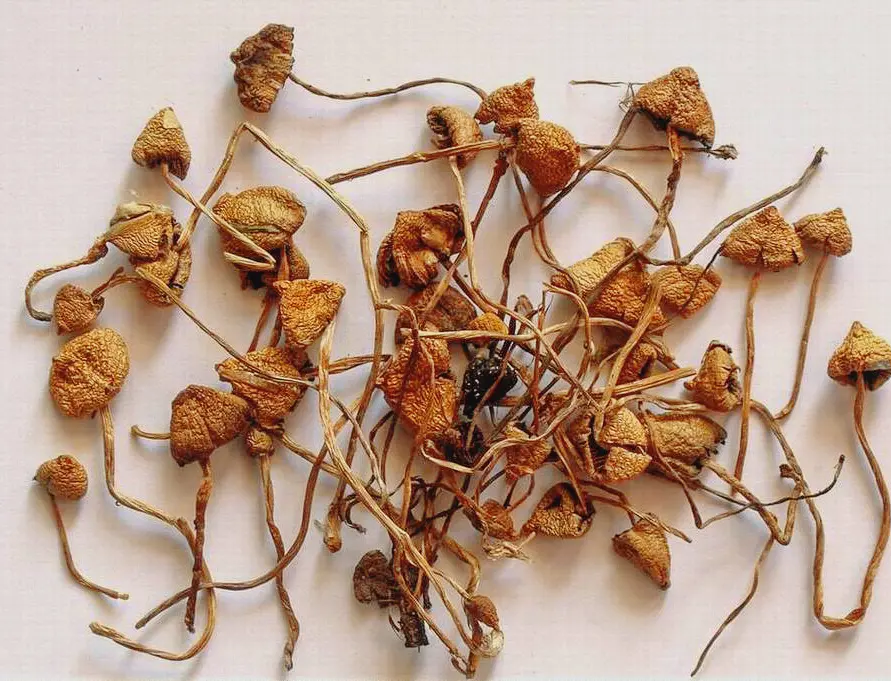
Psilocybe semilanceata, also known as Liberty Caps, are considered the most widespread naturally growing psilocybin mushroom in the world, according to Psilopedia. Not only that, but they’re also the third most potent, according to tests done in 1997 by Paul Stamets and Jochen Gartz, a German chemist and mycologist.
Identified in 1838, P. semilanceata was the first psilocybin mushroom native to Europe to be formally recognized. This species is still wildly popular and abundant, especially in England, where the first report of a family tripping out on them appeared in print: In London, 1799, a family reportedly picked and ate wild mushrooms growing in Green Park, which caused one son to laugh uncontrollably, the father to believe he was dying, and most family members to have vertigo.
Liberty caps, also known as Witch’s Hats, grow wildly all over the Northern Hemisphere. They prefer rich and acidic soil, like grasslands, meadows, pastures, and lawns, especially ones fertilized with sheep or cow manure. Because this is such a common environment around the world (think lawns, gardens, soccer fields), they grow in many countries throughout Europe, including France, Germany, Italy, Bulgaria, Finland, Iceland, Russia, and Turkey. They also grow in North America, on the West Coast from California to British Columbia in the fall to early winter, and to a lesser extent on the East Coast from Newfoundland to Nova Scotia, Canada. Plus, some varieties are known to grow in the Southern Hemisphere, too, in Chile and New Zealand.
Read: Canada Now Has Psilocybin Dispensaries
Liberty caps are small and can blend in with the grass because their stems are only 40 to 100 mm (1.5 to 4 in) long. In fact, they’re the smallest of the top few most potent psilocybin mushrooms. They have a conical or bell-shaped cap, hence their name, and they reportedly taste similar to flour.
Although they grow all over the world, they’re very difficult to cultivate indoors, so most Liberty Caps that are consumed are picked in the wild. But be careful when identifying because they can easily be confused with a few similar-looking poisonous species that grow in the same areas.
Psilocybe azurescens (Flying Saucer Mushrooms) – One of the Strongest Magic Mushroom Strains in the Wild
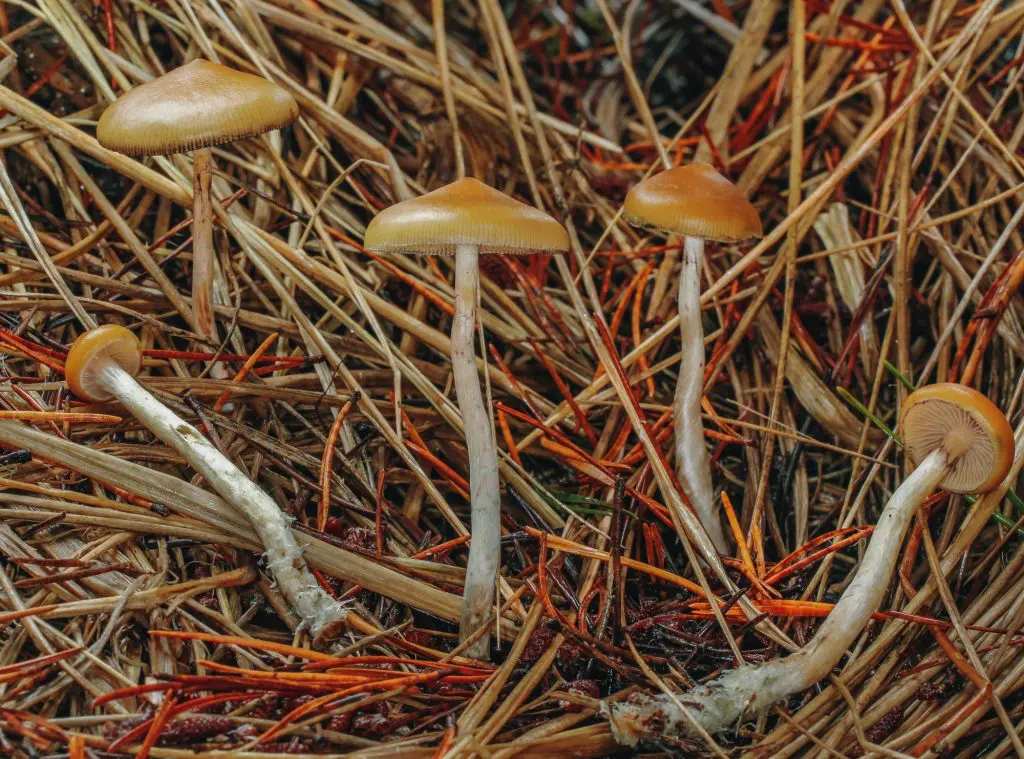
P. azurescens, also known as Flying Saucers, Blue Runners, Blue Angels, or Azzies, are the strongest psilocybin species that grows in the wild. As the story goes, they were originally found by Boy Scouts camping in Oregon in 1979, but weren’t an official species until Paul Stamets identified them in 1996 and published his findings.
Azurescens are only found on the West coast of the U.S. from California to Washington, and mostly cluster near the Columbia River delta in Oregon. That’s because they prefer to live in sandy soils, such as near dunes and sea grasses, and on loose, decaying wood. They can even withstand pretty chilly temperatures compared to other psilocybin containing mushrooms, from 16 to 24° C (60 – 75° F). Fortunately, that also makes Azzies easy to cultivate outside for home growers in the U.S. and Europe. Unfortunately, though, they apparently taste very bitter.
Read: Why You Should Grow Your Own Mushrooms
Psilocybe azurescens have some of the highest percentages of psilocybin (up to 1.78 percent), psilocin (0.38 percent), and baeocystin (0.35 percent), which is three to four times more than p. cubensis or p. semilanceata. Therefore, one dried gram could be a potent dose, so psilonauts should tread lightly with these extra powerful fungi.
Not to mention, there is also a potential side effect of paralysis after ingesting higher doses. Although only temporary, it can be an anxiety-inducing experience if you’re not prepared. However, flying saucers—named for their unique UFO-like shape—are known for their intense visuals and profound inner journeys. Their potent strength also makes them popular for microdosing, according to strain database Psillow, and you would need very little for intended effects.
Psilocybe tampanensis (Magic Truffles, Philosopher’s Stone)
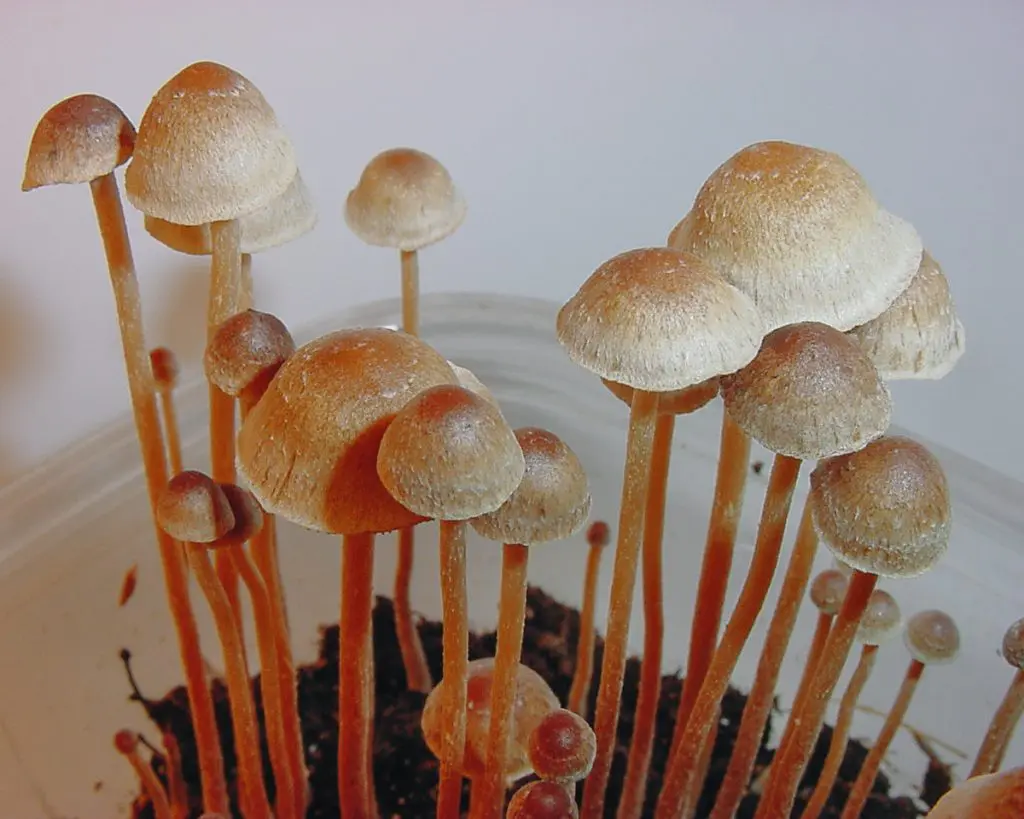
Psilocybin tampanensis produces truffles, or “sclerotia,” which contain psilocybin. These truffles are often called philosopher’s stones, magic truffles, or psilocybin truffles. P. tampanensis can also fruit into small yellow-brown mushrooms with conic caps, but most folks just grow and eat their sclerotia, which grow underground and contain up to 0.68 percent psilocybin and 0.32 percent psilocin, according to Stamets’ book.
These are the type of psilocybin mushrooms that are sold at specialty shops and given at magic truffle retreats in the Netherlands through a legal loophole. Although philosopher’s stones were first discovered near Tampa, Florida in 1977, they haven’t been found in the sunshine state since. In fact, they are very rare to find in the wild, but have become popular for home cultivators due to their relative ease of growing.
How to Grow Shrooms Bundle
Take Both of Our Courses and Save $90!
The experience of magic truffles in comparison to other psilocybin-containing mushrooms is said to be very similar, but depending on the dose, somewhat less intense. That said, it’s also been reported that the body load can be heavier and nausea more common due to the dense nature of the “stones.” Like all magic mushrooms, the trip itself really depends more on the person, their experience, the dose, and of course, the set and setting in which they were consumed. (You can learn more how to take shrooms in our guide, and if you’d like to go even deeper, we have a class that will walk you through every step of preparing for and navigating your shroom trip.)
Psilocybe zapotecorum
Psilocybe zapotecorum is another species native to Mexico that has current and likely ancient ceremonial use. It’s named for the Zapotec indigenous community of southern Oaxaca, and according to Gaston Guzman, is thought to be the mushroom in many of the ancient ceramic mushroom statues that have been uncovered in Mexico. In the Zapotec language, P. zapotecorum are referred to as “Bado, Badao, and Badao Zoo,” which translates to drunk mushroom or possibly, drunk god. In Guzman’s 1983 book, The Genus Psilocybe, he reported this species of mushroom could sometimes be found growing naturally inside the adobe homes of the Zapotec people.
Psilocybe zapotecorum also grows outside of Mexico, and has been found in subtropical South America, including Colombia, Peru, Brazil, and Argentina. According to Stamets, this sacred shroomy prefers to live in swampy, muddy soil that’s humus rich with leaves and wood debris, and is often found in “gregarious” patches. It can vary in size and shape, with a stem that can grow anywhere between 3 and 36 centimeters that’s typically white but fades to blue then black with age or when bruised. It has a tan to creamy brown cap that’s conical to convex and that can grow between 2 and 13 centimeters.
Psilocybe cyanescens (Wavy Caps)

Psilocybe cyanescens is known as the Wavy Cap mushroom because of the rippled shape of its cap. It was first formally identified by Elsie Wakefield in England in 1946, although according to Psilopedia, she had been collecting Cyans since 1910.
They’re believed to be native to Central Europe and the Pacific Northwest, but it’s hard to tell because they are now one of the most widespread wild psilocybin-containing mushrooms in the world. That’s because of the environment they prefer: woody debris, like the wood chips and mulch that populate gardens, trails, and parks. In fact, that’s how P. cyanescens is thought to have spread internationally, from lumber and other mulch production and distribution centers to gardens around the globe.
While they’re tough to grow indoors, they’re wildly popular with mushroom identifiers because of their strength. Wavy caps are known to be potent and can contain between 0.3 percent to 1.68 percent psilocybin, 0.28 percent to 0.51 percent psilocin, and 0.02 percent to 0.03 percent baeocystin, according to Stamets. When they’re found in the wild, they can be in enormous patches, and are stronger when eaten fresh, although still produce substantial effects when dried.
Copelandia cyanescens a.k.a. Panaeolus cyanescens (Blue Meanies)
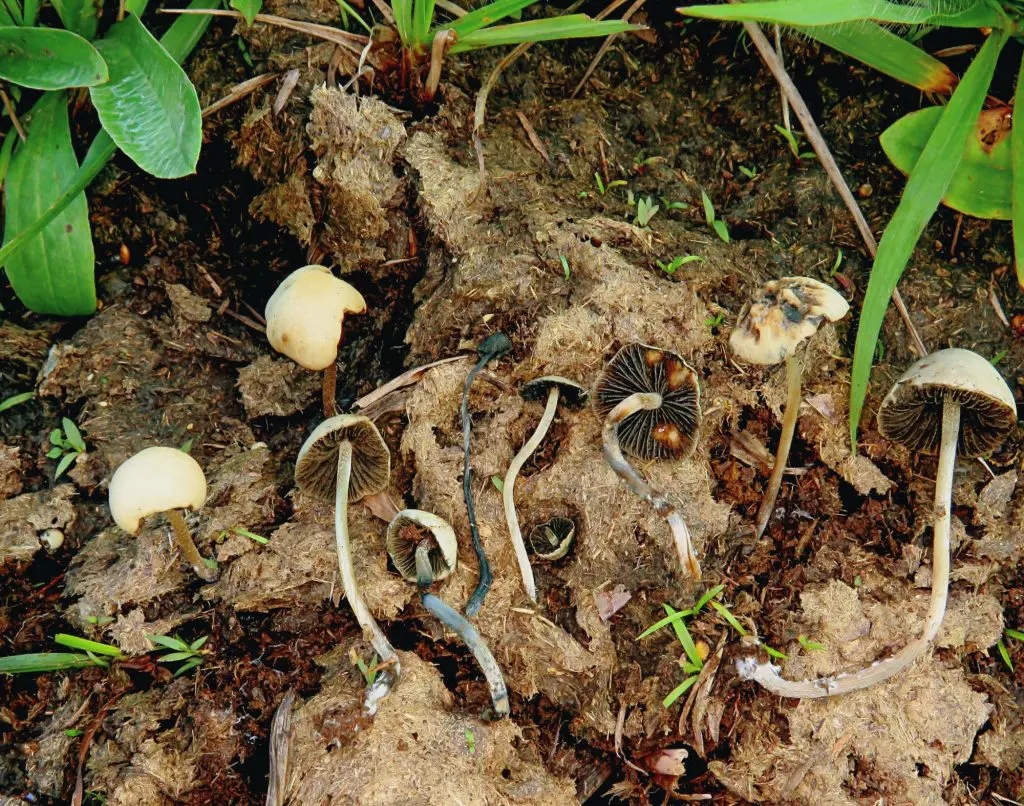
Panaeolus cyanescens or Copelandia cyanescens are sometimes referred to as “Blue Meanies,” which can be confusing because there is also a strain of Psilocybe cubensis called Blue Meanies. However these mushrooms are different in a few ways. For one, these are the first species of mushroom we’ve listed that isn’t part of the Psilocybe genus, but instead, Panaeolus. Yet that doesn’t mean they aren’t magic. In fact, these shroomies are some of the strongest in the world, with two to three times the amount of psilocybin and psilocin than good ‘ol cubensis.
Copelandia cyanescens prefer to live in dung in pastures and fields in warmer, subtropical climates. Therefore, they can be found in the states of Hawaii, Louisiana, Texas, and Mississippi, but they can also be found abroad in the Caribbean (including Jamaica, Bermuda, and Trinidad), Costa Rica, Mexico, South America, and even Australia, Africa (including South Africa and Madagascar), Thailand, Japan, New Zealand, and Europe (including France and Spain). Panaeolus cyanescens is very similar to Panaeolus tropicalis, which also contains psilocybin and grows in similar dung-loving environments.
Psilocybe caerulescens (Landslide Mushrooms, Derrumbes)

Psilocybe caerulescens are known as “Derrumbes” (meaning “Landslide Mushrooms”) in Mexico, where they grow naturally. They were first reported by the scientific community near Montgomery, Alabama, in 1923 on sugar cane mulch, and to this day, can be found in the Southern US in states like South Carolina and Georgia. But Psilocybe caerulescens became famous when curandera Maria Sabina gave mycologist Gordon Wasson thirteen pairs during a Mazatec ritual velada ceremony, which Wasson then wrote about for Life Magazine, when the term “magic mushroom” was born.
Read: Will Shroom Dispensaries Become a Thing Anytime Soon?
Derrumbes are still used ceremoniously by the Mazatec people of Oaxaca, Mexico, and continue to grow in the Sierra Madre mountain range. That’s because they are resilient to the low temperatures and high altitudes of those regions, and because they prefer to live in the former sites of landslides and other regions free of plants during the Mexican rainy season (May/June until September/October). They’ve been cultivated outside for centuries, and according to Stamets, can also be found growing in Venezuela and Brazil.
Derrumbes are small, with stems ranging from 40 to 120 mm (1.5 to 4 in), and have a silvery-blue metallic luster that makes them easy to differentiate from other species, according to Psillow. Their potency is low to moderate, and the trip can even be a bit shorter, lasting from three to six hours. They’re a good introduction to magic mushrooms for this reason, but can also be a disappointment to those with Psilocybe cubensis experience who travel to Mexico to try them.
Psilocybe mexicana (Teonanacatl, Pajaritos)
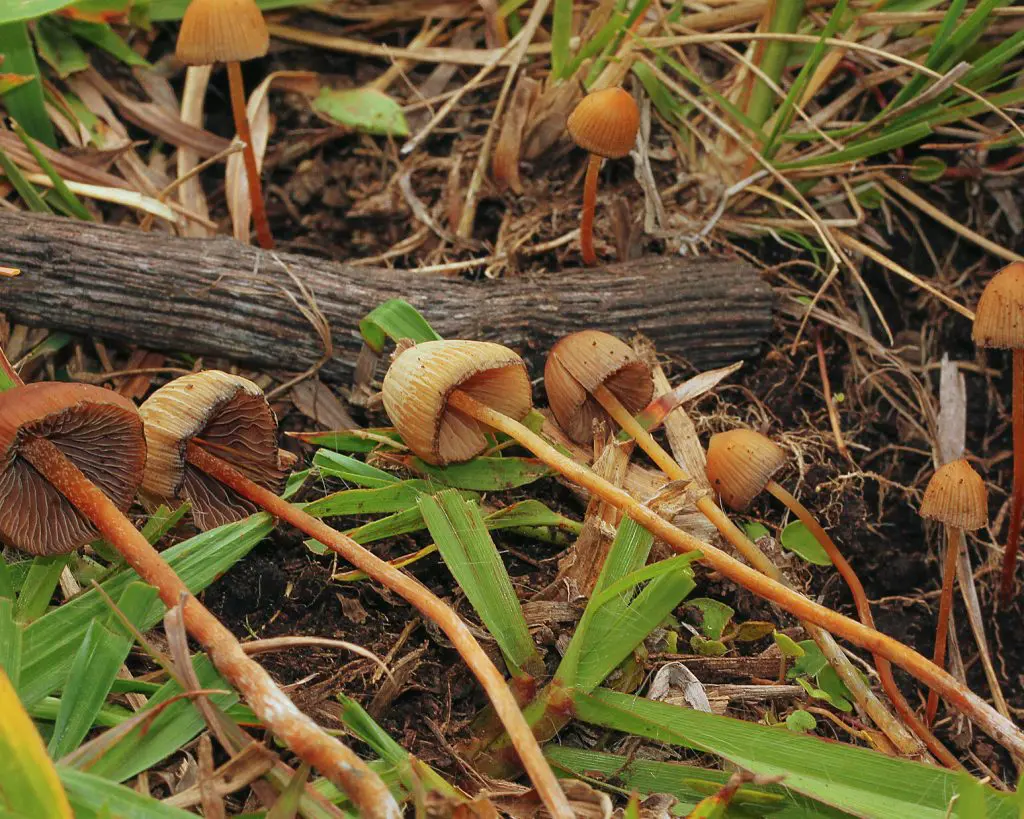
Psilocybe mexicana has a rich history. It’s believed that this is the species of mushroom that the Nahuatl or Aztec people used ceremoniously and called “Teonanacatl,” meaning “flesh of the Gods,” before Spanish colonization. P. mexicana is also the species that French botanist Roger Heim sent to Albert Hoffman in 1958. Hoffman, the chemist who discovered LSD, used that sample to cultivate more magic mushrooms and isolate psilocybin and psilocin for the first time in a lab.
Read: Redesigning Psychedelic Mushrooms to Never Cause a “Bad Trip”
Psilocybe mexicana still grows to this day in Mexico during the rainy season, especially in the states of Oaxaca, Michoacán, Puebla, and others. The species is common at altitudes between 1000 and 1800 meters (3280 to 5900 feet), and prefers to live in moss, meadows, deciduous forests, and soils rich in manure, as well as alongside roads and trails—but never directly on dung.
In Mexico today they’re often called “Pajaritos” meaning “little birds” for packing such a potent experience into such a small, fragile mushroom. Because they somewhat look like Liberty Caps and live in similar environments, Paul Stamets has taken to calling them “Mexicana Liberty Caps.” They can also grow truffles or sclerotia, which contain both psilocybin and psilocin. (Although, their fruiting bodies generally contain more psilocybin, psilocin, and baeocystin according to Psillow.)
Psilocybe caerulipes (Blue Foot Mushroom)

Psilocybe caerulipes, also known as the Blue Foot Mushroom, is a rare psilocybin mushroom that grows in the US. It’s a wood loving mushroom and can be found growing on or around decaying hardwood logs, “especially near river systems,” writes Stamets. They can also be found growing on hardwood slash and debris, and are “widely distributed” east of the Great Plains throughout the Midwest and the Eastern US and up to Canada. “Although widely distributed, P. caerulipes is not found frequently,” writes Stamets. But when they grow on forest floors after warm summer and fall rains, they’re known to fruit in the same place for years.
Blue Foot mushrooms are named for their appearance: They have a blue-hue at the base of their stem. They are a moderately potent psilocybin mushroom, roughly the same strength as Psilocybe cubensis. Psillow warns that the experience could possibly be strong, so start small with one to three grams of dried mushrooms before diving into headier experiences.
Psilocybe stuntzii (Blue Ringer Mushroom, Stuntz’s Blue Legs)

Psilocybe stuntzii is a rare psilocybin mushroom that only grows in the West Coast of the US and Canada. It was first found on the University of Washington’s campus and named for Dr. Daniel Stuntz, who made the first type collection. Their nicknames “blue ringer” or “blue legs” come from the significant bluing reaction that occurs when handled.
Blue Ringers are also wood loving mushrooms and prefer to live on decaying debris, fresh mulch and wood chips. They can be found in grassy areas, as well, like fresh sod and well-manicured lawns, or along roads, paths, and gardens, according to Stamets. He also says that these mushrooms can fruit in “prodigious colonies” within 90 kilometers (56 miles) of Oregon’s , Washington’s, and British Columbia’s coastal regions. However, be warned that Blue Ringers look very similar to a toxic species of mushroom, Galerina marginata. Psillow writes that P. stuntzii will be sticky to the touch when moist, unlike G. marginata, and Stamets writes that Galerina’s orangish brown cap and rusty brown spores distinguish it. Always be careful when collecting mushrooms and never ingest something you can’t absolutely identify.
Shrooms: Risks of Foraging For Different Types of Magic Mushrooms
There are some things to look out for when foraging for mushrooms—or buying them on the black market. Firstly, because there are dozens of different kinds of shrooms with varying potencies, you always want to make sure to clarify what kind of shrooms you’re buying. A standard dose of shrooms is around two or three grams, but two grams of penis envy mushrooms could be much stronger than, say, two grams of golden teachers. When foraging, the biggest risk, as mentioned, is that you might misidentify a mushroom. Some mushrooms found in the wild are actually fatal.
Shrooms: Addiction Potential
Once you’re sure that you’ve identified the correct mushroom, are there risks to actually taking it? In terms of addiction, shrooms have actually shown promise for treating substance use disorders. There are other risks, though, if you have bipolar, schizophrenia, or a personal or family history of psychosis. Otherwise, they’re relatively safe, especially if you’re engaging in best practices such as checking in on your set and setting before diving in.
Interested in having a psychedelic experience, but don't know where to start? Get our definitive guide on trusted legal retreat centers, clinical trials, therapists, and more.
